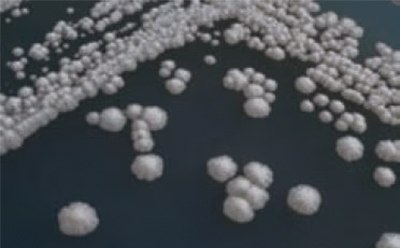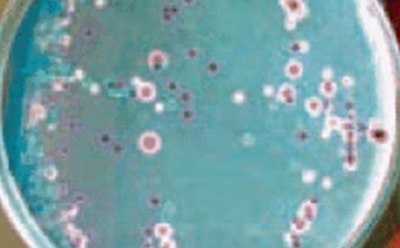Yeast and Molds in Food and Beverages
A versatile organism with a diversified range of species
Yeast is one of the most important microorganisms known and utilized by mankind. Yeast is one of the best studied eukaryotic organisms and is often used in molecular biology as well as diverse other applications. It is the most used organism for fermentation.
Yeasts are unicellular fungi, although they sometimes build multicellular constructs known as pseudohyphae, or false hyphae. In current technology, yeasts have an important role in the production of biofuels. The biomass from yeast is also used as a nutritional supplement or as a component of microbiological media. It is also an important source of vitamin B12.
The natural sources of yeast vary broadly. They may be found in the ocean, on the human and animal skin, and on fruit skin.
Section Overview
Yeast as Spoilage Organism
Yeasts can grow in foods with a low pH using sugars, organic acids, or other easily metabolized carbon sources. During growth, they metabolize compounds and produce metabolites. These can cause the look and taste of a food product to change and spoil. Beverages and foods affected include cheeses, meats, fruit juices and semi-liquid products, such as syrups and jams.
Yeast as Pathogens
Most yeasts are not pathogenic; however, there are certain strains that can cause infections in humans. Some yeast species are opportunistic pathogens that can cause infections in humans whose immune systems are compromised. Cryptococcus neoformans is a noteworthy such pathogen, causing the disease called cryptococcosis. Yeast cells are surrounded by a rigid capsule of polysaccharides, which helps to prevent them from being recognized by the immune system. Yeasts of the genus Candida, another group of opportunistic pathogens, cause oral and vaginal infections in humans, a condition known as candidiasis. Candida occurs as a commensal yeast in the mucus membranes of humans. The same strains, however, can become pathogenic under certain circumstances.
Yeast Reproduction
Yeasts have asexual and sexual reproductive cycles; however, the most common method for reproduction is asexual by budding or fission. The nucleus of the parent cell splits, and a daughter cell is built out of the parent cell and is separated. The sexual reproduction method (meiosis) entails division of a diploid chromosome set and production of haploid spores, which then may conjugate with another cell to reform a diploid cell. However, haploid cells will generally die under stress, while spores can survive harsh conditions.
Different Species of Yeast
There are diverse species of yeasts with a broad range of applications. While most yeasts are beneficial to humans and provide benefits such as biotechnological advancements, other unpleasant organisms may lead to infections or cause spoilage of fruit juices and alcoholic beverages. Some of the best-known yeast species with their respective descriptions are listed in Table 1.

Figure 1.Several baker’s yeast colonies on a microbiological medium
- Saccharomyces cerevisiae: Also called budding yeast or baker’s yeast. Saccharomyces comes from the Greek term for sugar mold. The organism is also used as top-fermenting yeast in the brewery. It can ferment glucose, fructose, mannose, galactose, maltose, maltotriose, raffinose, and trehalose, but not lactose and cellobiose. The cells are round to ovoid and have a diameter of 5–10 micrometres. For thousands of years mankind has made use of this species’s metabolic abilities: its carbon dioxide has been used in baking and its alcohol in alcoholic beverages. The organism reproduces by asexual reproduction called budding.
- Saccharomyces carlsbergensis, Saccharomyces uvarum: Bottom-fermenting yeasts, used to produce lager beer; also ferments many sugars at low temperatures.
- Candida albicans: Part of the normal human gut and mouth flora. Although 80% of humans will never encounter any harmful symptoms, it can cause opportunistic oral, intestinal, and genital infections and, in immunocompromised patients, even life-threatening diseases. The species is the most common cause of candidiasis. An adaption strategy of C. albicans is phenotypic switching (or phenotypic dimorphism), whereby the yeast switches between the two forms in which it can grow. When it infects host tissue, it switches from a unicellular form typical of yeasts into its invasive, multicellular filamentous form. Pharmaceuticals and cosmetics manufacturers must ensure that their production environment and finished products do not contain harmful levels of pathogens such as C. albicans.
- Candida utilis: used in the production of Kefir
- Brettanomyces bruxellensis (Dekkera bruxellensis): spoilage organism in wine
- Pichia pastoris: organism for biotechnological production of proteins (high growth rate and non-fastidious)
- Malassezia furfur: responsible for skin problem (scurf)
Molds in Food & Beverages
Molds are a large and taxonomically diverse group. They grow as multicellular filaments called hyphae. The network of a mold’s hyphae is considered a single organism and called a mycelium. There are thousands of known species with a wide range of lifestyles but all requiring moisture for growth. They include saprotrophs, mesophiles, psychrophiles and thermophiles. About a quarter of the world's food is believed to be contaminated by the mycotoxins of molds. Such toxins are produced by most molds under certain conditions and can infest food anywhere: in the field, in storage silos, in manufacturing facilities, on supermarket shelves and in the kitchen.
High levels of airborne mold spores can cause allergic reactions, asthma episodes, irritations of the nose, eye and throat, sinus congestion, as well as other respiratory problems. When mold spores are inhaled by an immunocompromised person, some of these spores may start to grow on living tissue, attach to cells along the respiratory tract and cause further problems.
Cultivation of Yeast & Molds
We offer a wide range of media for the enrichment, isolation and enumeration of yeast and molds. These high quality, consistent culture media are available in a variety of formulations as dehydrated culture media in the form of granules. These granulated culture media are not only convenient but also safe, meeting the highest industry performance standards as described in ISO 11133. Granulation causes significantly less dust than powdered media, leading to less inhalation of hazardous media components that cause allergic responses. In addition, it minimizes contamination of the work environment.
Yeasts can be grown in the laboratory on solid culture media or in liquid broths. Typical media used for the cultivation of yeasts include potato dextrose agar or broth, Wallerstein nutrient agar, yeast peptone dextrose agar, and yeast mold agar or broth.
Visit our Microbial Culture Media webpage to choose from broad portfolio dehydrated culture media in powder or granules and liquid media bottles.
Total Yeast and Mold Count to Assess Safety of Product
The total yeast and mold count (TYMC) is a test to detect mesophilic fungi in pharmaceutical ingredients that range from raw materials and water to the finished products. It is part of the qualitative phase of bioburden testing (including microbial limit testing) to determine the presence or absence of specific microorganisms. For pharmaceutical and cosmetics manufacturers, it is very important from a safety perspective to ensure that their products are free from hazardous microbes such as yeasts and molds.
Another part of microbial enumeration is the total aerobic microbial count (TAMC). It is used to determine the total count of aerobic bacteria.
To determine the total yeast and mold count (TYMC) in raw materials, water and finished pharmaceutical and cosmetics products, we offer a comprehensive range of selective, granulated dehydrated culture media (DCM). Visit webpage to explore products.
Detection, Enumeration and Cultivation of Yeasts
For the detection, enumeration and cultivation of yeasts, the classical culture method is still needed. The media are in many cases very simple, as yeast is non-fastidious. Regarding selectivity, oxytetracyclin, gentamicin, chloramphenicol, rose bengal, chlortetracycline, and bismuth ammonium citrate at low pH conditions are often used. For differentiating the morphology of the colony, the microscopic image (budding, spore production, mycel/pseudo-mycelium forming) and biochemical reactions are used. An overview of some common media is given in Tables 2 and 3.
Table 2. Most commonly used media for yeasts
Chromogenic media, one of the cleverest systems, provide a perfect solution for the selective isolation, differentiation and identification of molds and yeasts. With the aid of chromogenic substrates, certain characteristic enzymes are detected, and antibiotics inhibit bacterial growth. Differentiation is easy because of the different colors of the colonies, depending on the species, caused by the ability to cleave different chromogenic substrates (see Table 3 and Figure 2).

Figure 2 Candida Ident Agar, modified (Candida albicans = green-coloured smooth colonies, Candida tropicalis = blue to metallic blue-coloured raised colonies. Candida glabrata = cream to white, Candida krusei = purple coloured fuzzy colonies)
Detection Kits for Yeasts
The HybriScan Test Kit is a new technology based on a rRNA probes sandwich method. It is possible to detect diverse species or a group of organisms at the same time if the appropriate probes are chosen. The test needs no PCR and is as simple as the ELISA test. It is a very robust system and detects only living cells, unlike the PCR. It is also possible to quantify the cell numbers with a color reaction and microplate reader. The HybriScanD Yeast kit was designed with a specific probe for yeasts of the family of Saccharomycetaceae. The HybriScanD Drink kit detects additional beverage-spoiling bacteria.
For more information about the theoretical background of the system, additional kits available, and much more, visit the HybriScan Rapid Microbial Test System webpage.
Related Products
References
如要继续阅读,请登录或创建帐户。
暂无帐户?